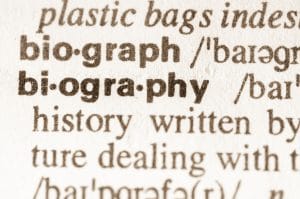Media pitching is a terrific, cost-effective strategy to get your business more exposure. When you’re ready to tell the world about what your company has to offer, make sure you have all the elements prepped for the press when they come searching to find out more! These crucial components include an Electronic Press Kit, professional biography and other visual collateral used in building your brand.
Building an Electronic Press Kit for the Media
An Electronic Press Kit (EPK) is a fact-based document created to provide the media with instant, 24-hour access to all the details of your product in a format they’re familiar with. The Electronic Press Kit’s copy should be clear and concise, designed to provide the media just the facts without a lot of fluffy filler words or advertising ‘sales’ language. Journalists and reporters are savvy and prefer information in a more straightforward manner.
So how do you create an Electronic Press Kit? EPKs are pretty simple to create once you understand the main point is to answer the five W’s – Who, What, When, Where and Why. When Three Girls generates a new Electronic Press Kit, we answer these specific questions:
- Who can I contact about it? Who is the person the media can contact to learn more about your product?
- What is it? Describe your product and what makes it stand out from the rest.
- Where is it? Where can people purchase the items you produce?
- How much is it? If you provide multiple purchase options, break it down in this section or give a price range.
- What are a few story ideas? Give the media some ideas on how they can present your product to their readers.
- What else? Is there any other important information about your product that the media should know about? This is also a great spot to include your company’s website.
Along with answering those six questions, make sure your Electronic Press Kit also includes:
- The phone number and email address for the person you want the media contacting.
- Details about what makes your company different from your competitors.
- Your company’s location.
- High-resolution images (at least 3×5 at 300dpi) for the media to download and use on their article.
- Anything else that might be newsworthy.
It is critical to remember that your EPK is NOT a press release; it is not meant to be mass-distributed to the media. When you’re finished, ask a co-worker or someone you trust to examine what you have created; this will ensure your copy is as clear and easy to read as possible.
Creating a Professional Biography for the Media

Creating a professional biography can be difficult, but this 4 step process makes the process less intimidating.
Do you have a professional biography ready to hand out to the media as needed? This is an easy way to provide additional details about yourself and contain fantastic information to include on your website. For many, professional biographies can be hard to write since they require you to talk about yourself. A few reasons why people find it difficult to compose a self-biography are:
- It can be hard to identify your achievements.
- You want to make yourself sound impressive without coming off conceited.
- A lot of people aren’t sure what the right mixture of personal and professional is.
In order to make writing your professional biography easier, here is a four-step process that addresses all these areas of concerns:
- Make note of the information you want to share with people and to include as part of your story. If you don’t know where to start, here are some areas to consider to get you going:
- Record your post-high school education including areas of study, colleges or trade schools, dates of graduation or certifications. Note any special classes or on-going education, workshops etc. that are directly pertinent to your field/line of work.
- Make note of your work history with your current company. Include the date you began working and any professional highlights of your career there.
- Include any awards, recognition, or honors you received in the last 5 years.
- List any professional organizations or affiliations you have (networking groups, clubs, trade groups etc.)
- Catalog personal organizations or affiliations you have (volunteer work, community groups etc.)
- Write down hobbies you have, sports you play, special talents, places you like to travel to, etc.
- Make note of your family including spouse or significant other, children and/or pets.
- Any other information about yourself you want to make sure to include.
- Go through the list and turn the bullet points into sentences. Try to combine items that are related, such as an award you received from one of your professional organizations.
- Combine the sentences into a few paragraphs that make sense. You don’t need to use everything, but try to include the most interesting and relevant information to what you’re doing now. It’s usually best to put the work-related highlights first and the personal tidbits at the very end.
- Read through your professional biography a couple of times, and make sure you proofread. Once you have read through it, have a friend or family member who knows you well read through your professional biography to make sure you didn’t miss anything important or accidentally misrepresent yourself.
Once you have perfected your professional biography, post it on your website and have it handy to provide when requested by the media. I also recommend adding it to your online profiles, adjusting it accordingly to fit the different character requirements.
Providing Visual Elements for the Media
Many small business owners and entrepreneurs can’t afford to hire a graphic designer; like all the other facets of their business, they are required to put on their ‘artistic hat’ and create whatever needs creating. Whether it’s a meme, brochure, Fact Sheet, Press Kit or flyer, the visual content you create represents the company and needs to look professional.
Designing spectacular collateral for your business doesn’t have to be difficult or require an art degree; there are many programs available that most people can use! Canva is one that we use on a regular basis for image creation and of course, Microsoft Word goes a long way. When you need to put on the hat of designer, here are a few tips to keep in mind:
- Attention to detail.Make sure everything is spelled correctly and punctuation is in the right place. Typos can go a long way in destroying a company’s credibility and can change the meaning of the message you’re trying to convey.
- Concise but informative. Make sure you’re giving your reader a complete illustration, but don’t overwhelm them with too much information. For larger pieces content, like fliers and brochures, bullets or spaces between paragraphs will make the document much easier to read while also adding visual interest.
- Add visual interest.A picture can make a big difference in livening up a large piece of collateral. Either take a few pictures of your product to include or, if you prefer, purchase a photo from a stock photo website like 123RF or iStockPhoto. There are some websites with free images you can use, but make sure you understand the license agreements and aren’t breaking any copyright laws!
Tip: If the item you’re creating is the image, like a meme, you can still add visual interest with the background and colors you choose. Just remember you want your information to stand out; don’t choose distracting colors or patterns and make sure your font color is easy to read against the background.
- Font consistency.Pick out a professional-looking font to make as your official font and use it on every piece of material for your business. We recommend to stay away from Times New Roman as it is the default for many programs and, therefore, extremely common. At Three Girls, for example, we use Georgia. It looks professional but isn’t everywhere you look. Using the same font for your brochures, flyers, etc. is an easy way to add consistency between the various documents you create.
- Add a border. Adding a border around the element you’re creating is an easy way to give it a crisp, polished look, while dressing up an otherwise plain document.
When you’re faced with the task of creating visual pieces for your business, besides remembering these five tips, the most important thing to do is relax and have fun!
Working with the media is more than just sending out a message about your product and why it is so amazing. You also need to be armed with items that can provide the press more information about who you are and what your company does. Now that you have read this post you should be able to create an Electronic Press Kit, a professional biography and visual elements to have ready for the media when they request it.
Want to learn more about communicating with the press? Check out these other blog posts from the Three Girls Media team, and contact us today to learn how we can help you succeed.


